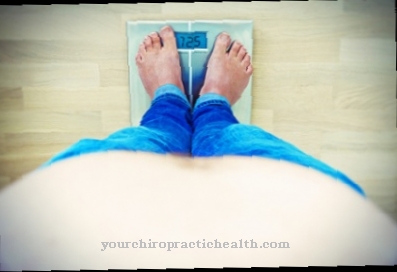Of the Tonic maze reflex (TLR) has an influence on all auditory, visual and motor processes in humans. These include posture, balance, orientation, perception and the function of the eye muscles.
What is the tonic labyrinth reflex?

The tonic labyrinth reflex, or TLR for short, is part of the early childhood reflexes. In the womb, the TLR is important so that the unborn child is in a stretched position so that it can pass through the birth canal. In the first three months, the reflex is physiologically pronounced. In newborns, it causes the extension from the fetal position to the straight line against gravity. After a few months the TLR becomes more and more inhibited.
A distinction is made between the TLR forwards and backwards. In the forward TLR, the newborn bends the head forward, followed by a bend of the whole body. In the rearward-facing TLR, the child stretches their head backwards, which leads to an elongation of the entire body.
If the newborn is lying on its stomach, the head and spine remain straight. There is no automatic head rotation. The legs are pulled under the torso by pulling them sideways. Thus, the tonic labyrinth reflex from the head downwards influences the muscle tone throughout the body. Central cycles of stimulus reception and processing are thus affected.
Function & task
The tonic labyrinth reflex affects many functional areas in the human organism. He is responsible for head control and muscle tone as well as the visual figure-basic perception. But it also controls spatial and acoustic perception and the creation and maintenance of balance.
It also controls how good or bad the later sense of time is. How well or how badly we see is also within his sphere of influence. Likewise, the ability to visually differentiate between b and d, 32 and 23 or the left and right side are part of it. For this reason, learning to use the clock and the ability to orientate yourself over time are assigned to these relationships.
It depends on the TLR forwards how the posture develops and presents itself. The fundamentally important muscle tension, the interest in active movement, especially in the form of sport, but also the human sense of time and spatial orientation so that people can find their way without the help of third parties, are forward dependent and shaped by the TLR.
The backward tonic labyrinth reflex depends on whether there is physical stiffness or a tendency to tiptoe. The same applies to physical balance and movement coordination. The backward TLR also influences whether the extensor muscles have a stronger influence than the flexor muscles and whether there are stiff jerky movements. The benefit of the TLR lies in its importance for the smooth functioning of all senses.
Each of these active functional areas is provided with a unique selling point in its assigned function. It is therefore of great importance for humans that all processes work for their auditory, visual and motor capabilities. Only in this way is unrestricted perception via the human senses and manual exercise of all activities, including body control, possible.
You can find your medication here
➔ Medicines for muscle weaknessIllnesses & ailments
Inadequate muscle tone, a disruption of the visual figure-ground perception and moderate head control can be attributed to the continued influence of the TLR. Equilibrium problems, disturbed spatial perception as well as a disturbance in hearing processing and serial errors or a poorly developed sense of time are known. Problems in action and movement planning (dyspraxia) have also been demonstrated. Ultimately, even slight to serious computing problems can arise.
If there are tone disorders in the mouth region, this can lead to jaw misalignments and impaired language development. Chewing and swallowing difficulties can also arise. A strong flow of saliva (hypersalivation) is also often observed.
If the TLR is not correctly inhibited, the effects can be serious when the head is tilted forward. Starting with the limited ability to crawl on hands and knees, a hunched back, hunched shoulders, bent legs, balancing movements of the arms and legs, and dizziness with or without disorientation can occur.
The reverse TLR is often not fully developed when the normal labor process is disrupted. Problems in inhibiting the TLR can then be assumed. The specific deficits that occur when the head is tilted backward include:
- a more or less pronounced hollow back
- increasing body tension up to walking on tiptoe or ball of the foot
- Compensating arm movements
- Attacks of vertigo with or without disorientation
If there are still residual reactions of the TLR, reference is increasingly made to moderate organizational skills and travel sickness. A not fully developed head position reflex can lead to an impairment of the eye function and furthermore to a disturbance of the interaction of eyes, ears and body movement sensation. Certain processing centers in the brain, such as the sense of balance, can also be disturbed. This, in turn, can often lead to misdiagnosed impairments or disruptions in performance.
Often the auditory and / or visual perception is also restricted. There is often a marked aversion to sporting activities. It is not uncommon for it to be possible to recognize and stick to number sequences only to a limited extent.













.jpg)

.jpg)
.jpg)











.jpg)